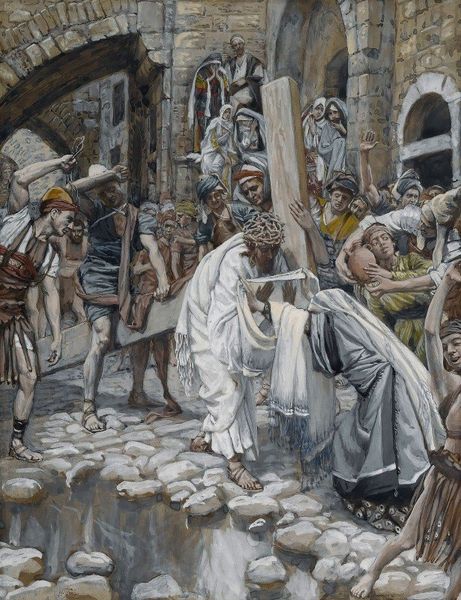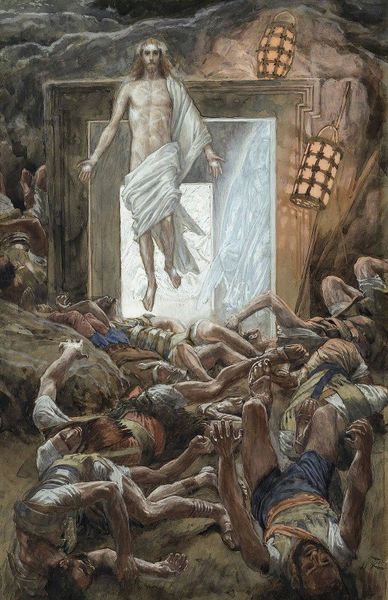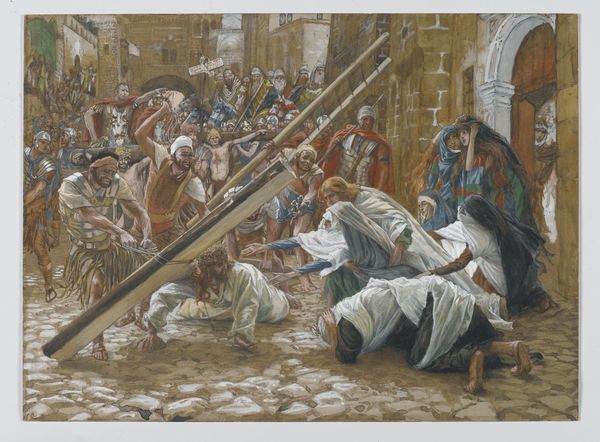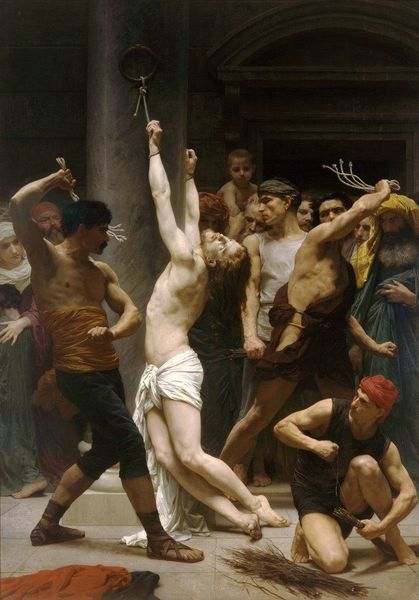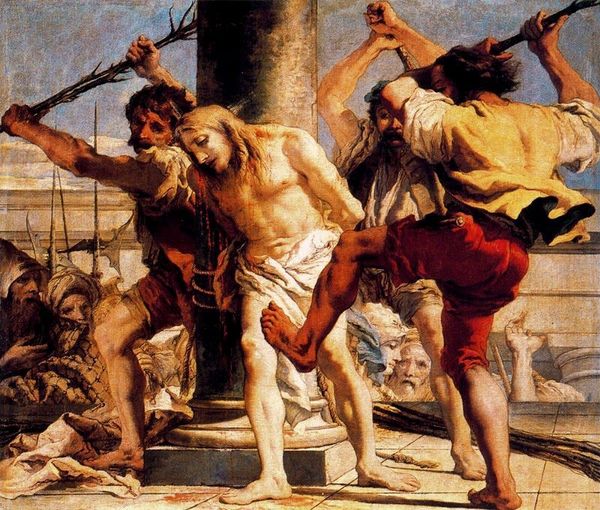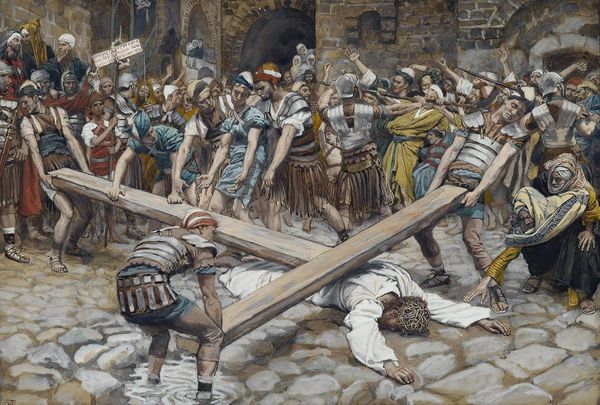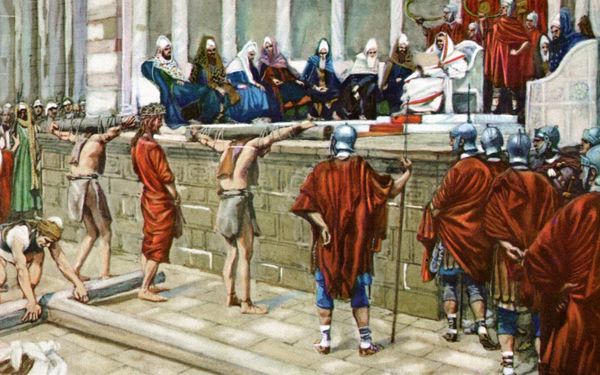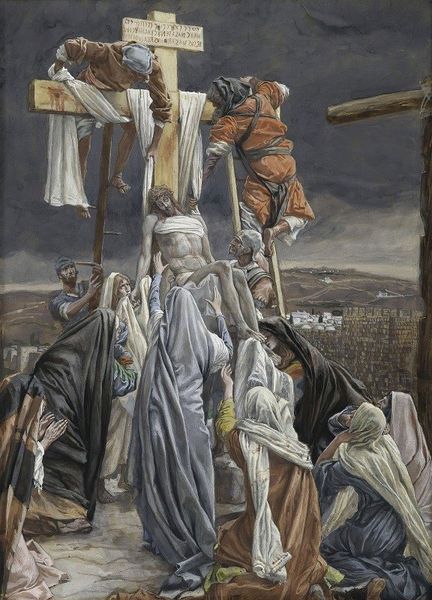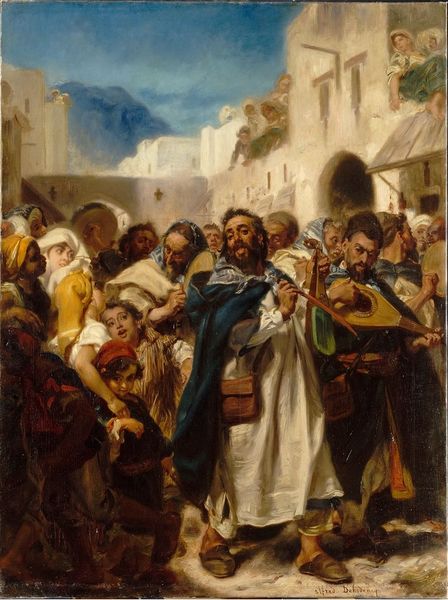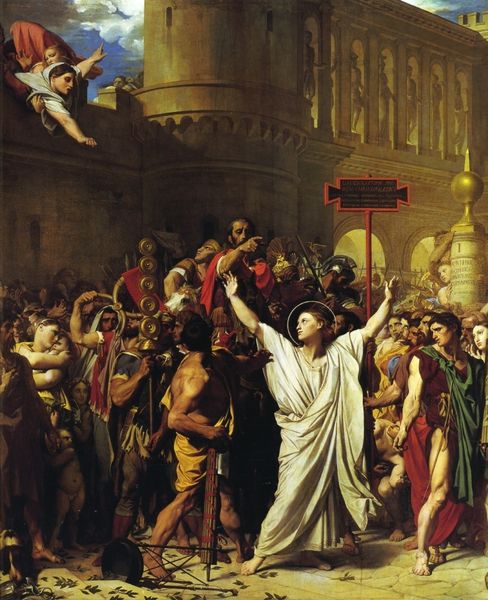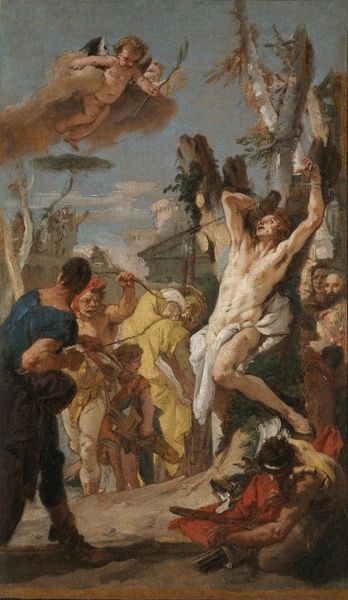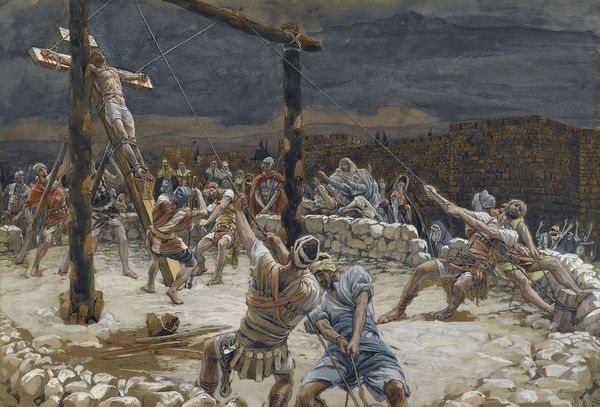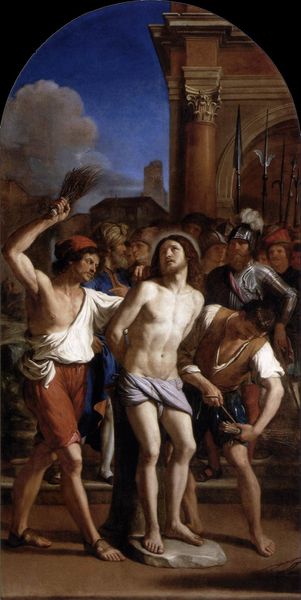
Copyright: Public Domain: Artvee
Editor: Here we have James Tissot's "The Scourging on the Front," painted sometime between 1886 and 1894, using oil paints. The way Tissot uses line to guide our eyes around the chaotic scene really strikes me. What do you make of the composition? Curator: The arrangement certainly dictates our understanding. Notice how Tissot employs a pyramidal structure, centering the figure of Christ bound to the column. The scourgers and onlookers frame him, creating a stage-like effect. Consider also the foreground details: the strewn reeds and the figures’ placement, directing our gaze upwards, emphasizing the verticality. What purpose does the artist pursue by use of such structure? Editor: Perhaps to highlight Christ's vulnerability through contrast? The composition traps him visually and physically, but do you think the academic style detracts from its emotional impact? Curator: I perceive academicism here in a more technical manner. Note the realism in anatomical representation, the details in drapery, and the overall precision. However, it could be argued that this detailed naturalism underscores the brutality of the act. Do the formal elements not, in fact, heighten the sensory experience for the viewer? Editor: That's a perspective I hadn't considered. It's interesting how focusing on form can lead to a different interpretation of the overall impact. Curator: Indeed. And conversely, a purely emotional read might miss the sophistication in Tissot's compositional strategy and use of academic tools to achieve the specific, desired response. I find the interaction of both quite valuable. Editor: Thanks, I'll be sure to apply that lens in my further studies. It shows how stylistic choices can have an impact to an artwork.
Comments
No comments
Be the first to comment and join the conversation on the ultimate creative platform.
